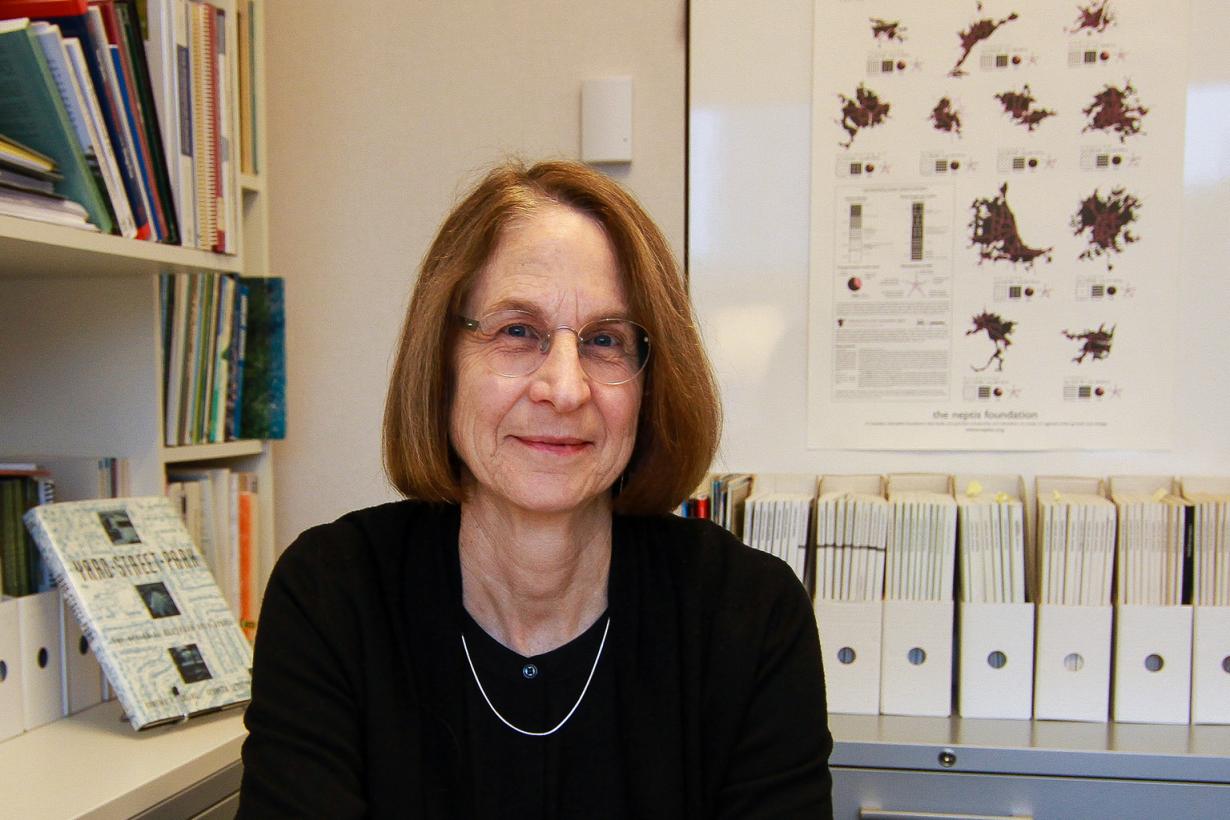Cynthia taught in the architecture, landscape architecture and environmental design programs. She has practiced landscape architecture in British Columbia and taught landscape architecture at the University of Oregon and the University of British Columbia. She is a registered Landscape Architect in British Columbia and a Fellow of the Council of Educators in Landscape Architecture, the Canadian Society of Landscape Architects, and the American Society of Landscape Architects.
Her work focuses on sustainable urban design, green systems, the public realm, and tools for urban design. With Ronald Kellett, she co-directs the elementslab, a research group in the School of Architecture and Landscape Architecture and housed in the Centre for Interactive Research on Sustainability. The lab creates new knowledge, processes and tools for effective, creative integration of urban form and environment, emphasizing methods of measured visualization to elevate urban sustainability and resiliency. The work contributes to the development of urban design policy, tools, indicators, guidelines and community prototypes.
Education
MLA, University of Oregon
BLA, University of Oregon
BES, University of Manitoba
Select publications
Czekajlo, A., Alva, J., Szeto, J., Girling, C., & Kellett, R. (in press 2023). “Impact of 2050 tree shading strategies on building cooling demands”. Buildings and Cities.
Czekajlo, Agatha, Zhaohua Cheng, Sara Barron, Cynthia Girling, Lorien Nesbitt, (in press 2023) “Modelling four neighbourhood-scale urban forest scenarios for 2050: Vancouver, Canada”. Arboriculture and Urban Forestry.
Lu, Y., Girling, C., Martino, N., Kim, J., Kellett, R., & Salter, J. (2023). Climate action at the neighbourhood scale: Comparing municipal future scenarios. Buildings and Cities, 4(1), pp. 83–102. DOI: https://doi.org/10.5334/bc.275
Lu, Y., McCarty, J., Szeto, J., Cheng, Z., Martino, N., Girling, C., Rysanek, A., Barron, S., Matasci, G. (2022) How ‘shady’ are neighborhood trees: modelling the shading effect of Vancouver’s urban canopy. Arboriculture & Urban Forestry 48 (2) p. 95-112. (https://doi.org/10.48044/jauf.2022.008)
Cheng, Zhaohua, Konijnendijk van den Bosch, C., Sheppard, S., Nesbitt, L., Girling, C., (2021) Alignment of municipal climate change and urban forestry policies: A Canadian perspective, Environmental Science and Policy, Vol. 122, pp 14-24. https://doi.org/10.1016/j.envsci.2021.04.005
Martino, N., Girling, C., & Lu, Y. (2021). Urban form and livability: socioeconomic and built environment indicators. Buildings and Cities, 2(1), pp. 220–243. DOI: https://doi.org/10.5334/bc.82
Lu, Y., Scott, A., Kim, J., Curi, C. B., Mccarty, J., Pardy, A., Rysanek, A., Girling, C & Kellett, R. (2021). Integration of an energy–economy model with an urban energy model. Buildings and Cities, 2(1), pp. 114–133. DOI: https://doi.org/10.5334/bc.71
Jonathan Salter, Yuhao Lu, Ju Chan Kim, Ronald Kellett, Cynthia Girling, Fausto Inomata, Alix Krahn. 2020. Iterative ‘what-if’ neighborhood simulation: energy and emissions impacts. Buildings and Cities, published online https://doi.org/10.5334/bc.51
Nesbitt, L., Meitner, M., Sheppard, S., Girling, C. “Urban green equity on the ground: Practice-based models of urban green equity in three multicultural cities”, Urban Forestry and Urban Greening, Volume 44, No. 8, August 2019.
Girling, Cynthia, Kejia Zheng, Alessandra Monti, Marjan Ebneshahidi, “Walkability vs. walking: Assessing outcomes of walkability at Southeast False Creek, Vancouver, Canada”, Journal of Urbanism, Vol. 12, No. 4, October 2019. https://doi.org/10.1080/17549175.2019.1626269.
Nesbitt, Lorien, Michael J. Meitner, Cynthia Girling, Stephen Sheppard, Yuhao Lu, “Who has access to urban vegetation? A spatial analysis of distributional green equity in 10 US cities”, Landscape and Urban Planning, Volume 181, pp. 51-79. 2019.
Books
Girling, C. & Kellett, R. (2005). Skinny streets and green neighborhoods: Design for environment and community. Washington, DC: Island Press.
Helphand, K., & Girling, C. (1994). Yard, street, park: The design of suburban open space. New York: John Wiley and Sons.
